Spring and summer are the perfect seasons to enjoy fresh, colorful produce, and what better way to showcase them than with a beautiful crudite platter?
A crudite board is a great, healthy snack or appetizer, and when it’s this pretty, it’s also a stunning focal point to your gathering. Whether you’re hosting a dinner party, a summer picnic, or a brunch for Mother’s Day or Easter, this colorful crudité board a la Meghan Markle is sure to impress your guests. Below, I’m sharing exactly how to make this crudite platter, and it’s a lot easier than you think.
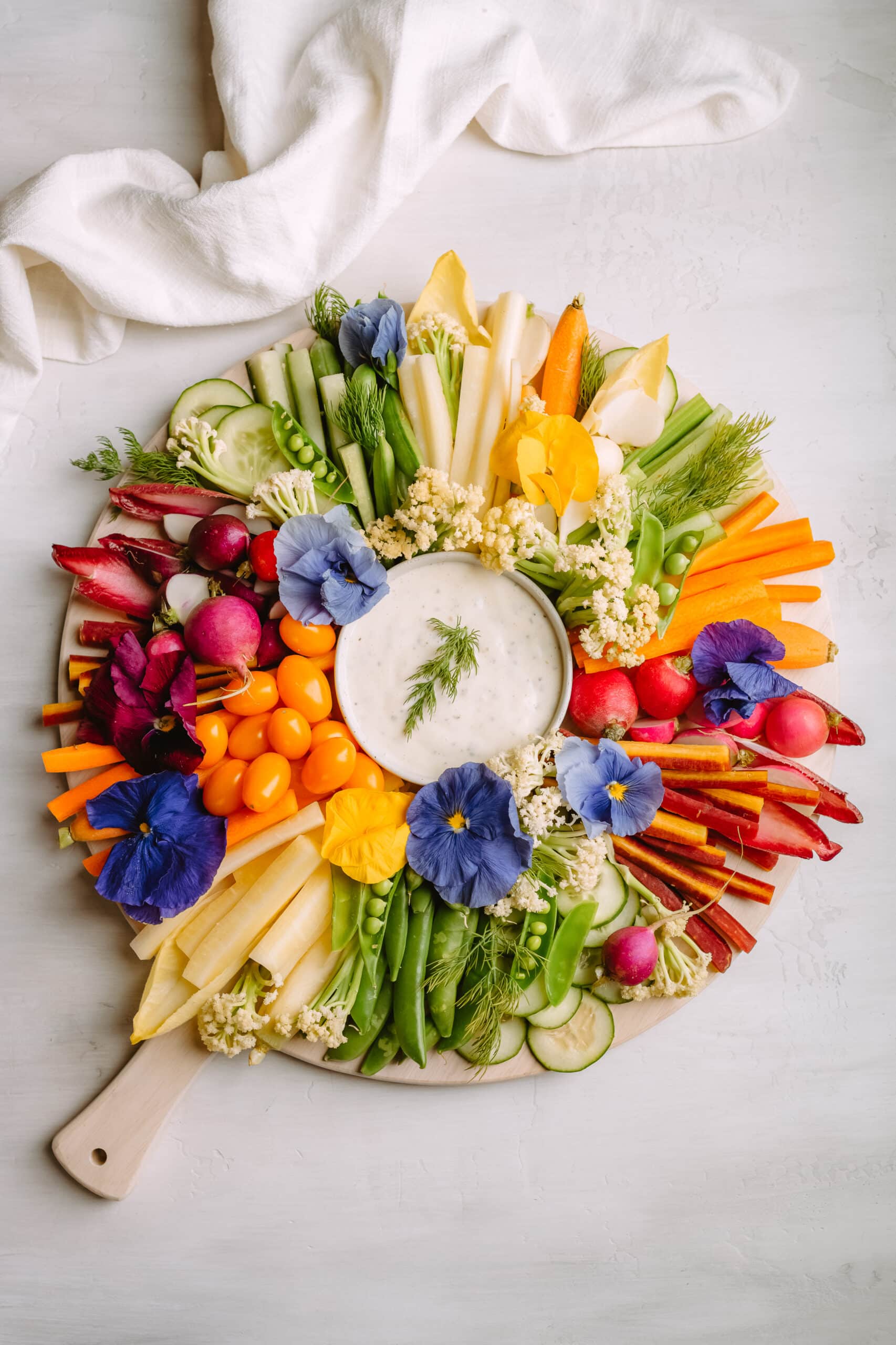
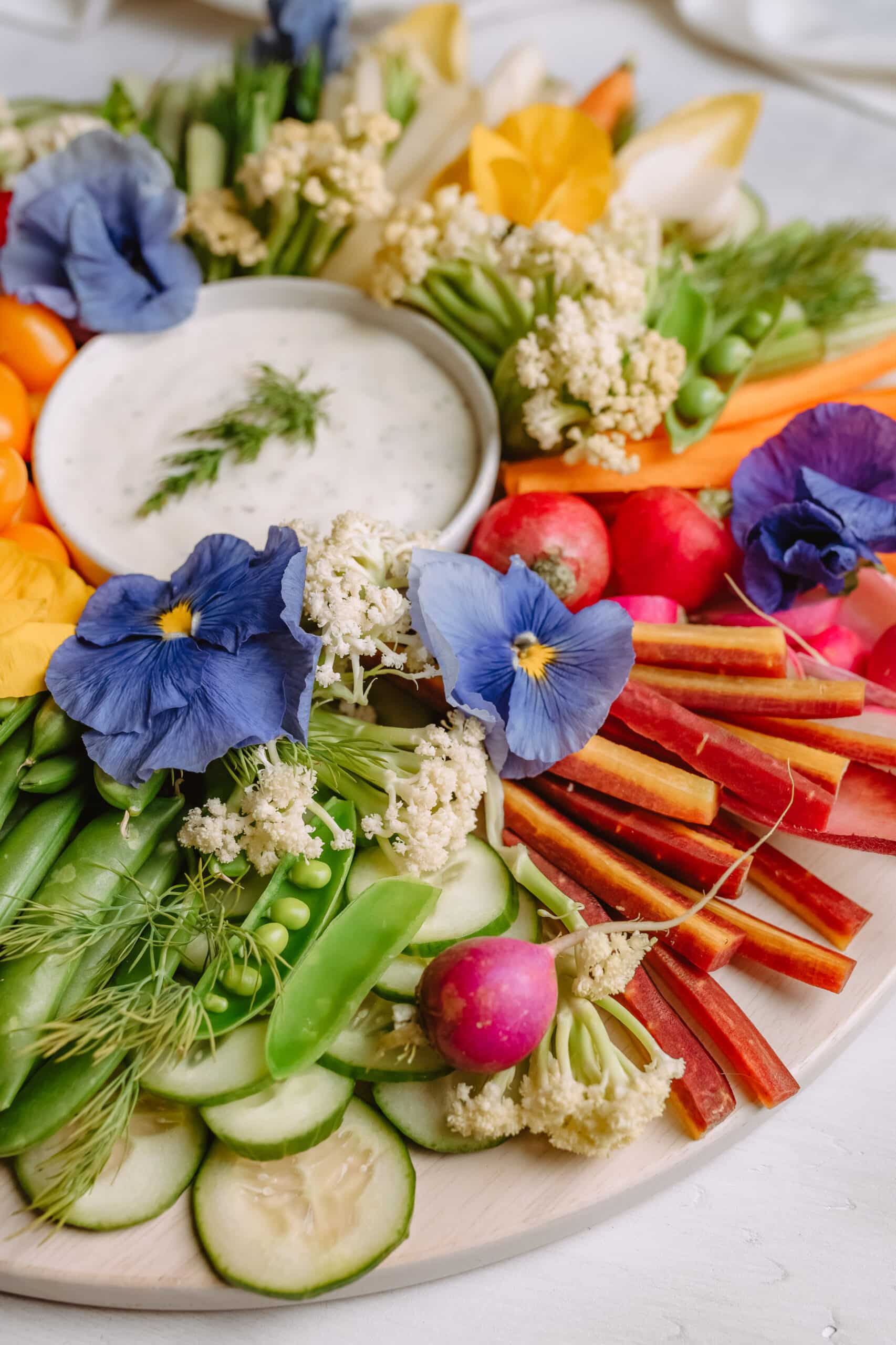
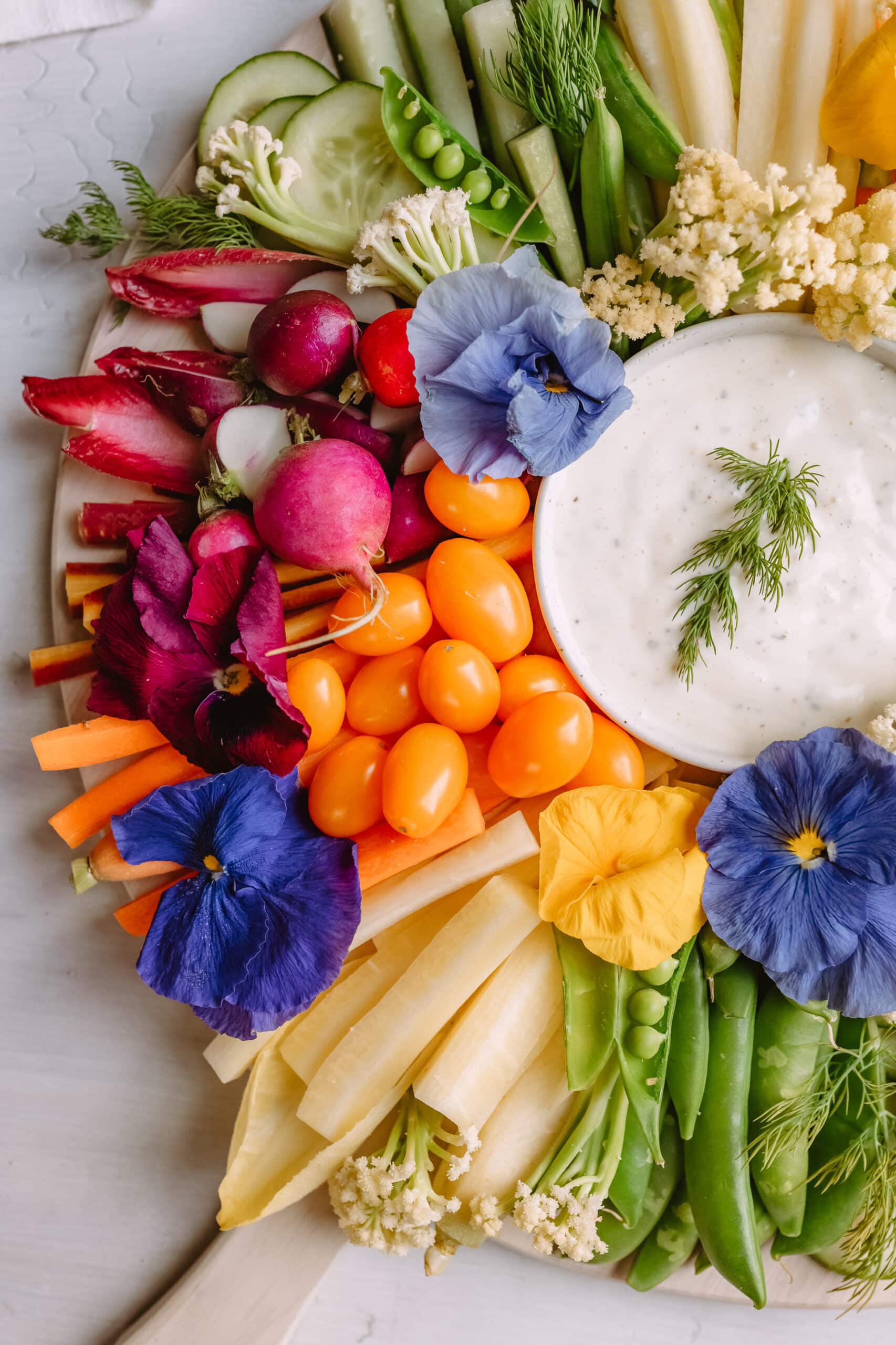
How to Make This Beautiful Crudite Platter
When I make my boards, I focus on a few simple things: abundance, color, and texture. All three of these help to create a beautiful, Instagram-worthy board. Here are the exact steps to make this crudite platter.
Buy Ingredients in Like Colors
A crudité board is a platter of raw vegetables served with a dip or two, but what makes one so artful is the colors of the vegetables on the tray, and the order in which you arrange them.
When shopping for ingredients, pay attention to the colors of the vegetables. Start with your typical veggie tray contenders: carrots and celery. Trader Joe’s and Whole Foods sell rainbow carrots in different colors, and I like to use them because they instantly provide a variety of color. From there, find other vegetables in like colors.
You choose whatever vegetables you like, of course, but here’s what I used:
- Rainbow carrots (orange, light yellow/white, reddish purple)
- Tomatoes (orange)
- Radishes (red and white)
- Endive (light yellow/white and red)
- Celery (green)
- Cucumber (green)
- Snap peas (green)
- Baby cauliflower (white)
- Dill for garnish (green)
- Edible flowers for garnish (yellow and purple)
Hand Cut the Carrots
Look, as much as I love pre-cut vegetables, if you’re going for aesthetics for your crudite platter, hand cutting your carrots is crucial. Cutting them by hand makes for a more organic feel to your board. It looks a lot better to have variation in your carrots than those mini ones from the bag that are all identical.
After you peel your carrots, cut them in half, lengthwise. Then, cut each of those halves in half lengthwise to make long, skinny carrot sticks that don’t look weirdly machine-made.
Vary Vegetable Presentation
If you look closely at the photos of this crudite platter, you’ll notice that some of the ingredients vary in how I cut them. For the cucumber, I have slices and sticks. For the radishes, I cut halves, fourths, and even left some entirely full. Even for the carrots, I left a few in their “original state” with the green tips.
By cutting the same veggies in different ways, you’re adding texture and visual interest.
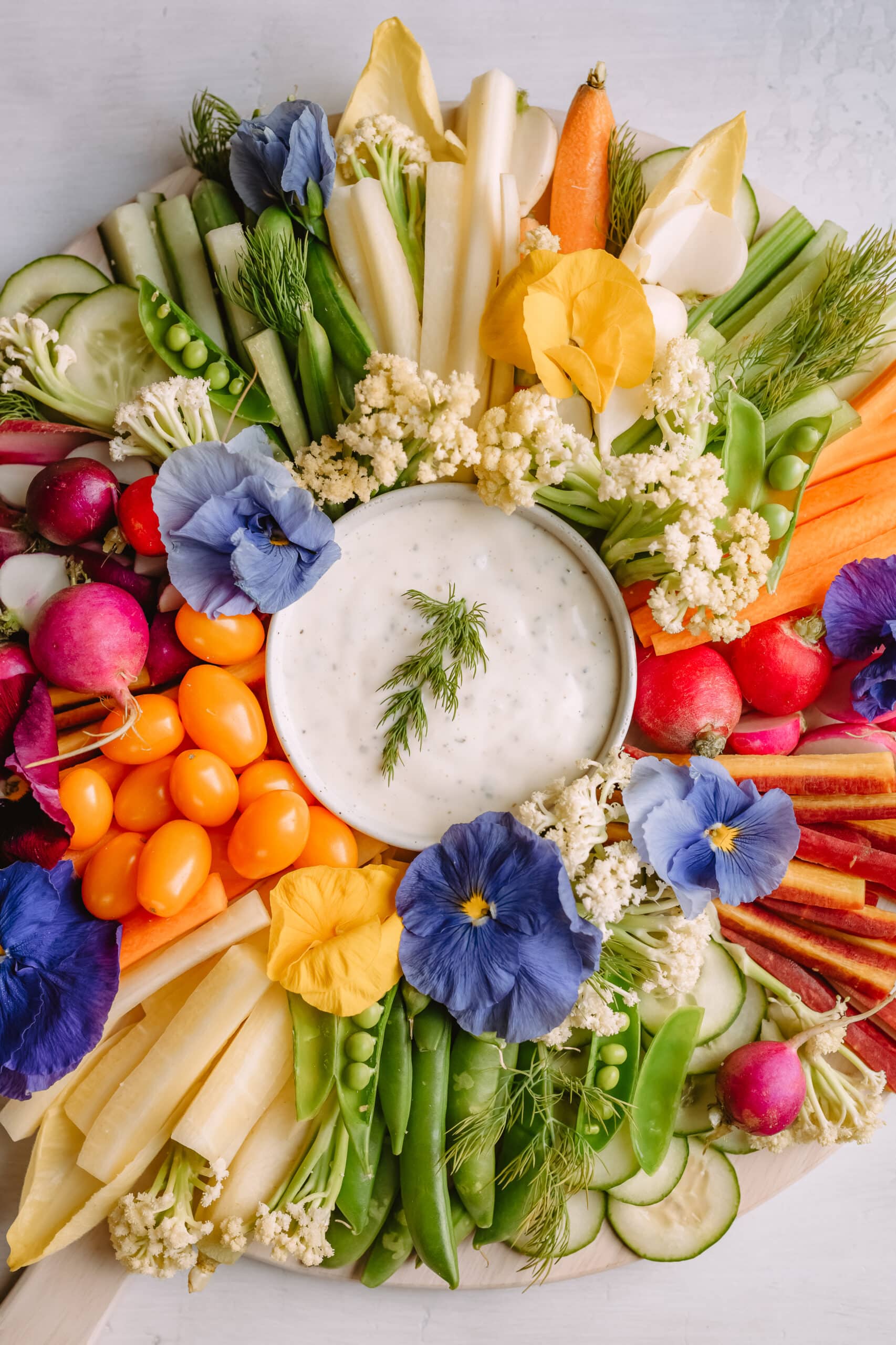
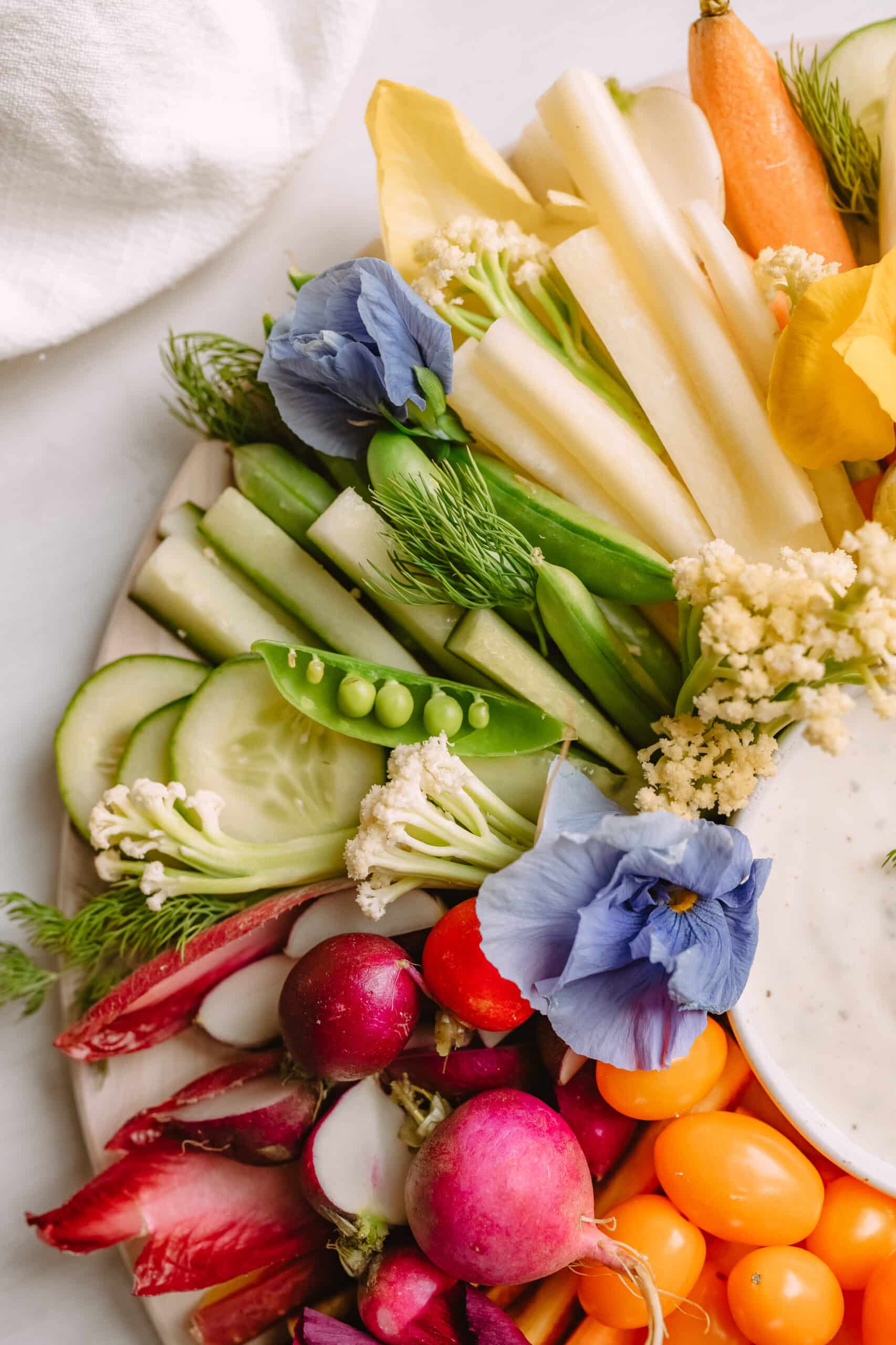
Assembling Your Crudite Platter
Step 1 – Place Your Dip Bowl First
Every time I make a grazing board, whether it’s a breakfast board or a seasonal charcuterie board, I start by placing any dips and bowls first. This anchors your board so you know where to place ingredients.
I used a circular board and placed the dip bowl in the center. If you don’t have a round board, you can place the bowl in the center of a square or rectangle board for a generally similar look.
Shop my round grazing board here.
Step 2 – Arrange Vegetables
Once you have your dip bowl in the middle of you board, start arranging your vegetables around it. To achieve the look in these photos, work around the board like a clock, and place the vegetables in various gradient patterns from light to dark.
Step 3 – Fill in Empty Spots
If you have any gaps in your board, fill them in with whatever ingredients are the same color of that section. I filled in the gaps of this board with endive pieces and extra cucumber slices.
Step 4 – Garnish
To take your board from beautiful to Pinterest-perfect, add garnish. I used dill to complement the greens of my vegetables. Herbs as garnish provide textural interest and fill in sparse areas to make the board look abundant and earthy.
If you’re using snap peas, open them up to show what’s inside! I love how this looks, and combined with edible flowers, they totally elevate this crudite board.
To make this board, remember to focus on abundance, color, and texture. Buy ingredients that share the same color for a more cohesive feel, then arrange them in a gradient pattern from dark to light. Fill in any gaps, then be sure to add the finishing touch to your crudite platter with some garnish like fresh herbs, edible flowers, or both. (I promise, this simple step will make your board extra impressive.
If you try this crudite platter, let me know how it goes!
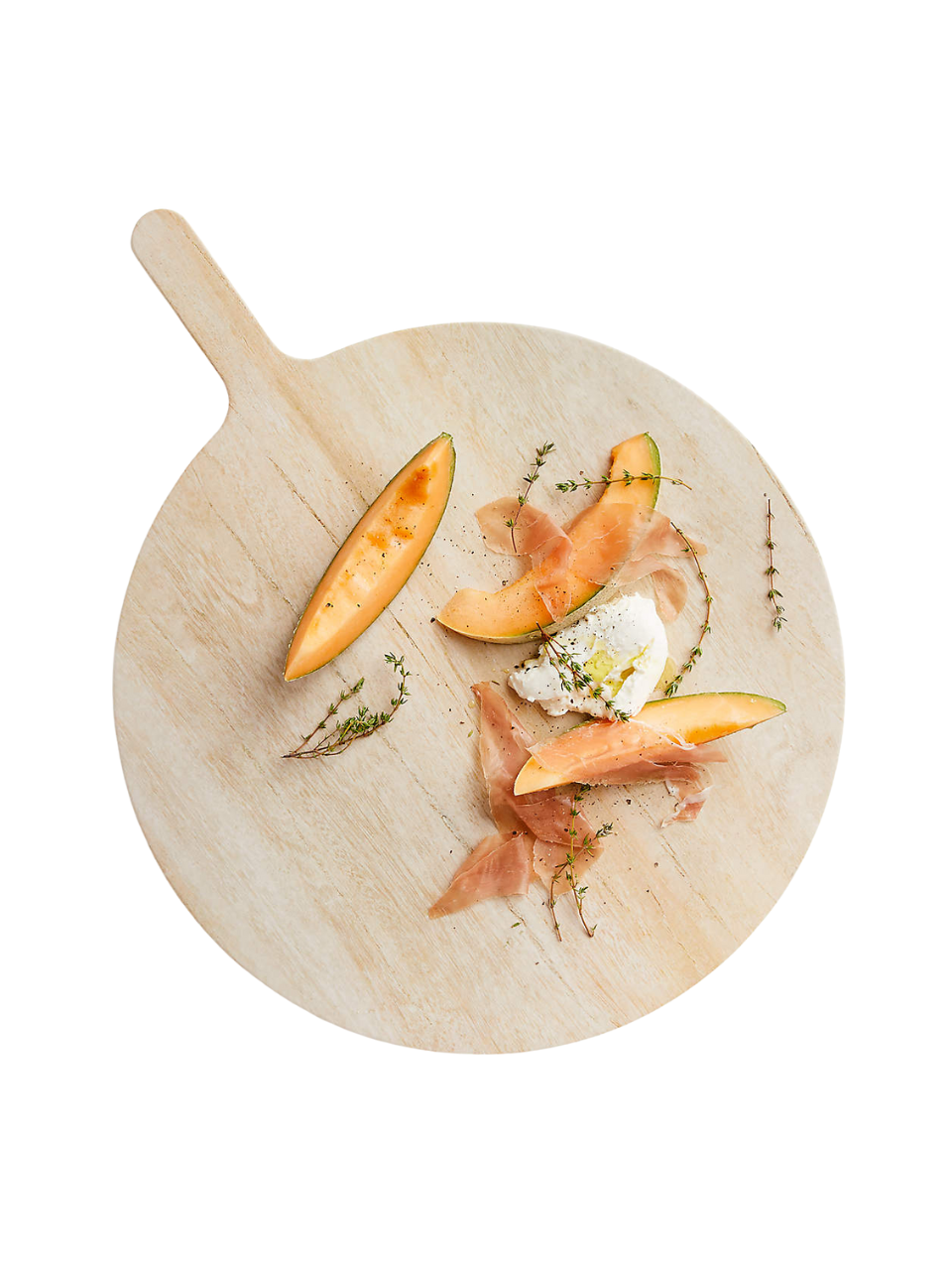
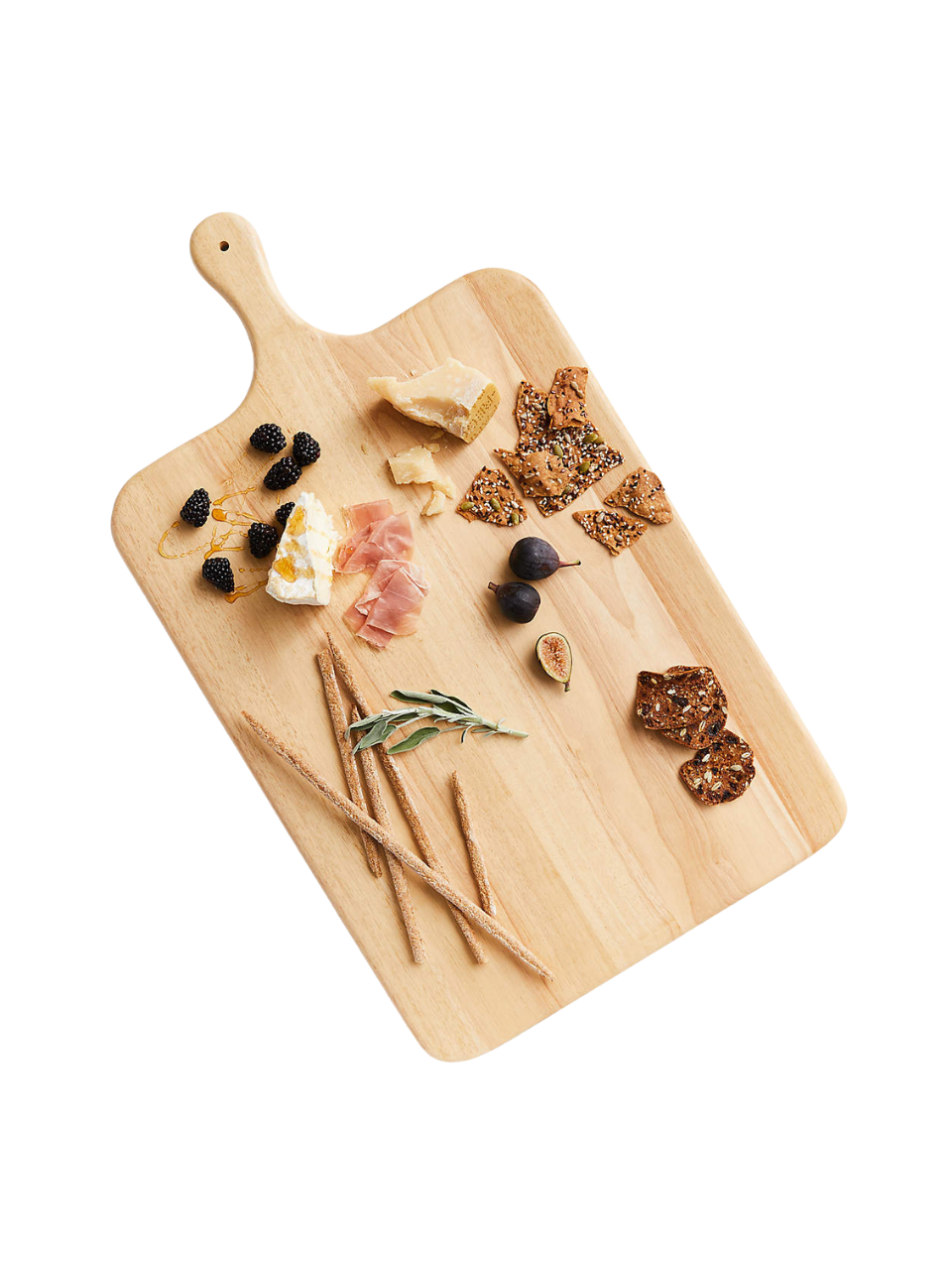
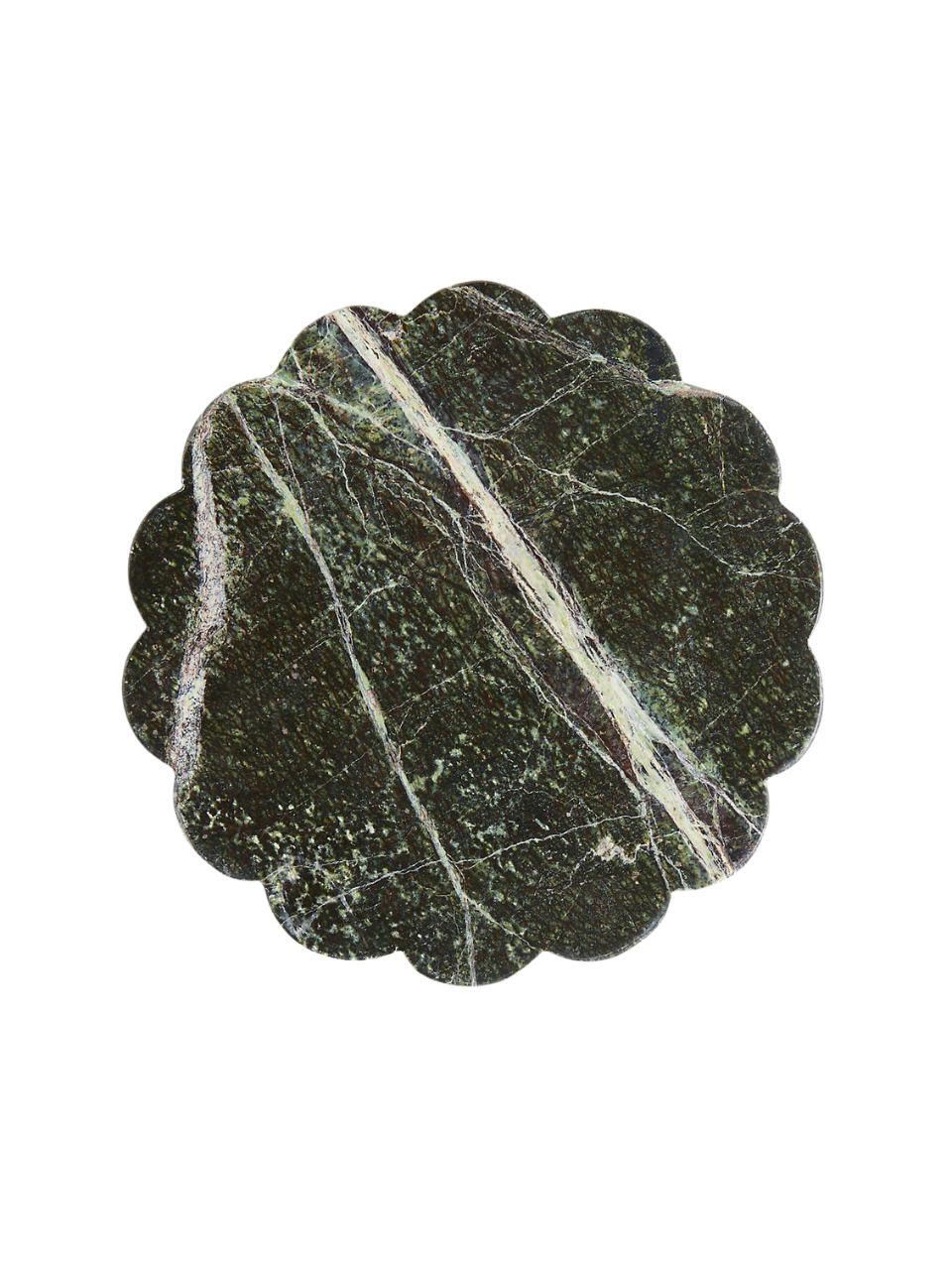










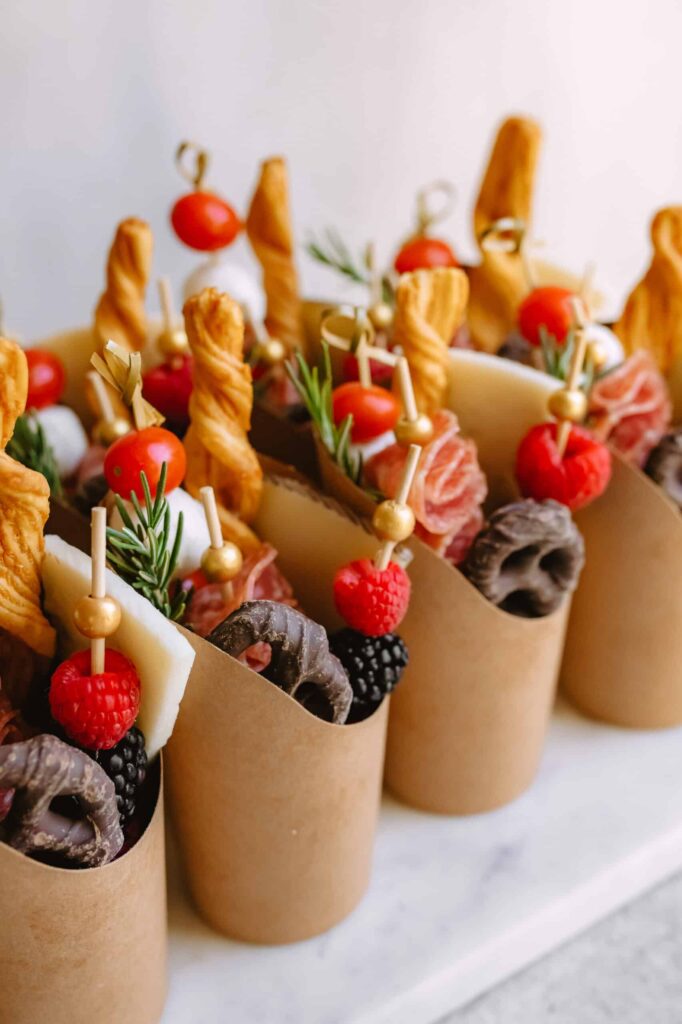
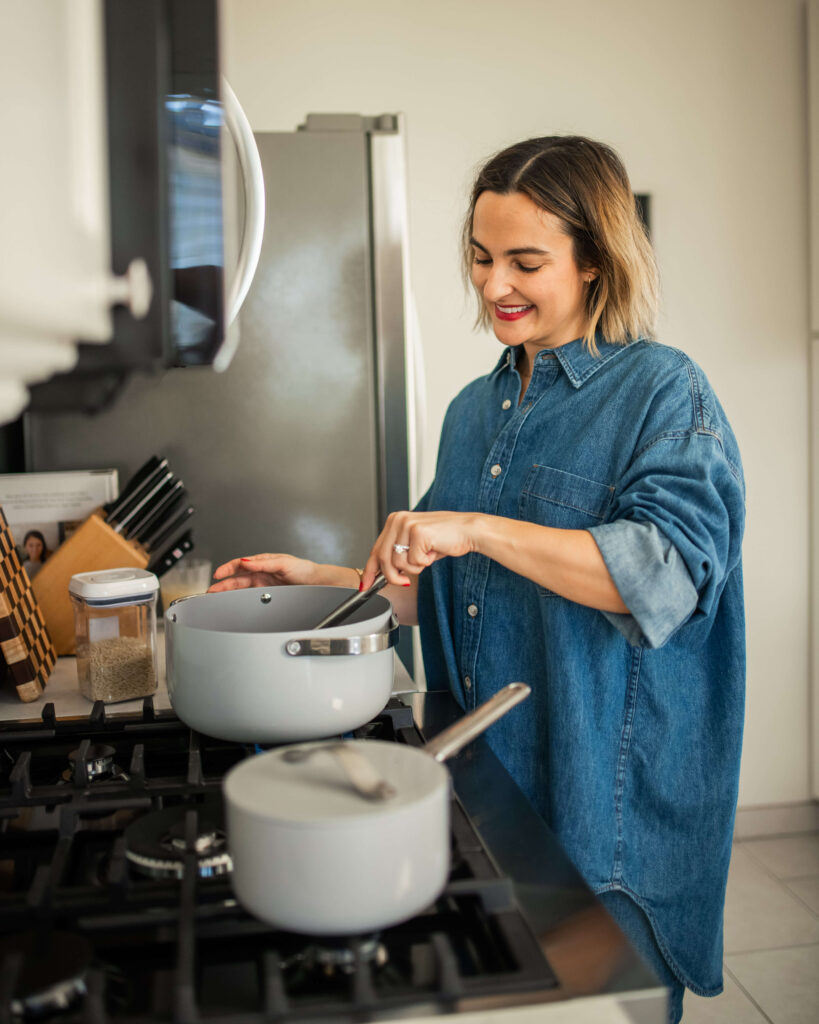
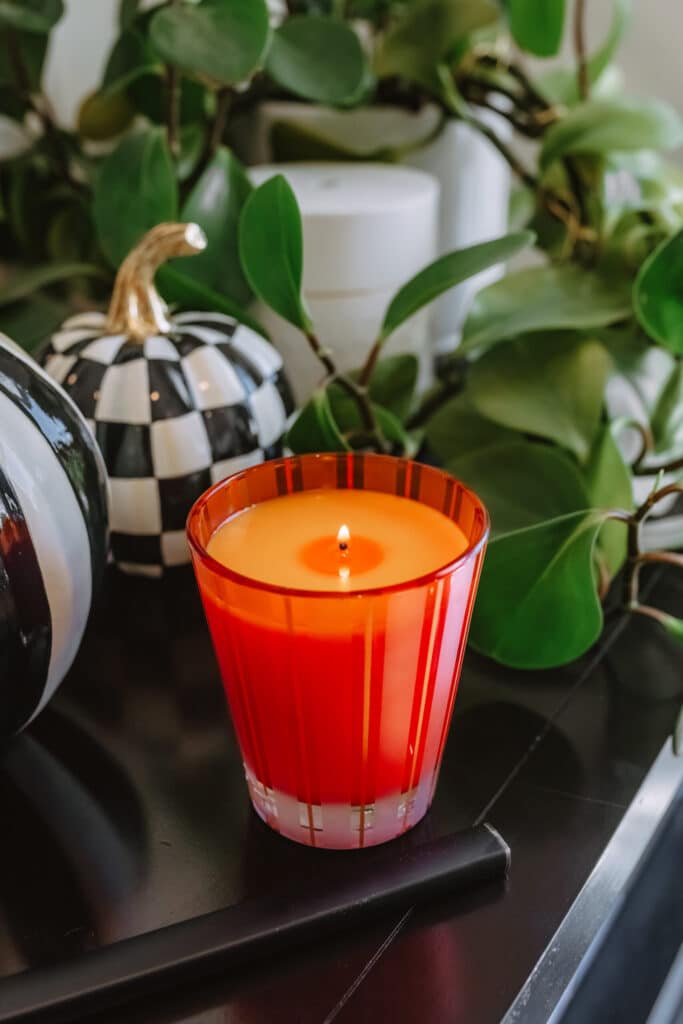
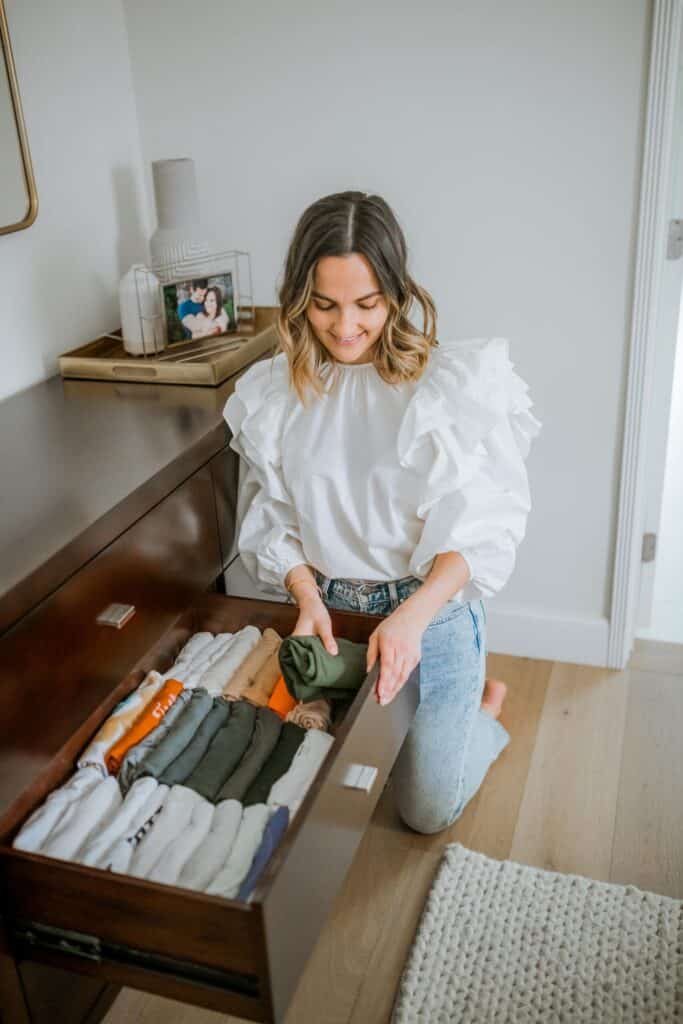



2 Responses
Just came across this pin on Pinterest! Looks like Meghan Markle was inspired by you! She did such a similar crudite board on her new show!! I actually thought the photo was from the show!
Oh my gosh, I haven’t watched the show yet, but now I’m going to have to! Enjoy. 🙂